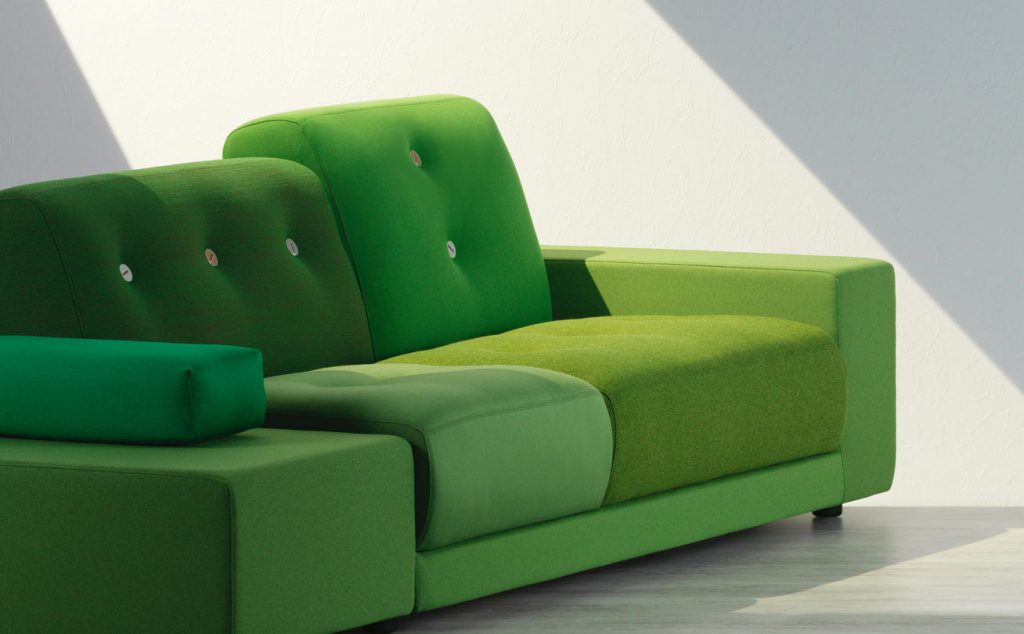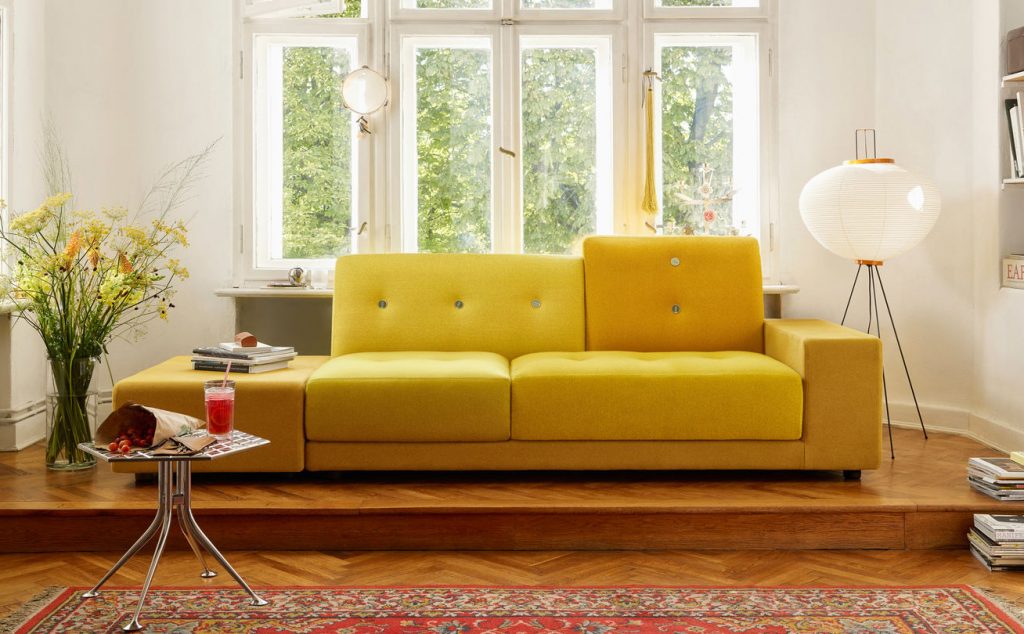In 2004, Vitra decided to launch a Home Collection. The aim was to develop a contemporary line of home furnishings as a complement to the domestic furniture classics that had always been a part of the Vitra portfolio, alongside the company’s extensive range of office furniture. Rolf Fehlbaum, Vitra’s CEO at the time, asked the Dutch designer Hella Jongerius if she would like to design a sofa for Vitra. ‘Why a sofa?’ she answered. ‘I hate sofas, big blocks of foam – I never see a sofa that I like.’ To which Fehlbaum replied, ‘Then why don’t you make one you like yourself?’
It was clear to Hella Jongerius from the outset that colours and fabrics would play a key role in her design. As an expert on colours and materials, she was aware that people have a very bad memory when it comes to colours. And many also lack a sure sense of what kind of textiles they like to have on their furniture, in contrast to their choice of clothing. So she sketched a sofa with seat and back cushions covered in diverse fabrics, each in a different tone of one basic colour. Over the following months, the design was developed for production in collaboration with specialists at Vitra and launched in 2005 at the Milan furniture fair.
Hella Jongerius named her new piece the Polder Sofa. In Holland, the word ‘polder’ refers to flatlands that have been reclaimed from the sea by means of dykes and drainage canals – a landscape evoked by the sofa’s asymmetrical structure. The upholstered cushions and sofa elements are covered with different fabrics in six carefully coordinated hues. At first glance the effect may be confusing: Was a mistake made during the upholstery process? Have some of the colours faded? Is the sofa used or new? In regard to this playful approach to colours and textures, Jongerius says: ‘Something interesting only emerges if I manage to stack diverse layers of ideas, stories, material characteristics, traces of the process, details, beauty, tactile experiences and misfits on top of each other.’



